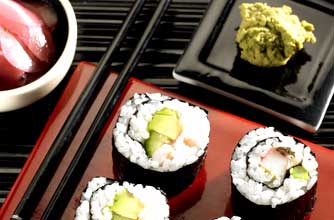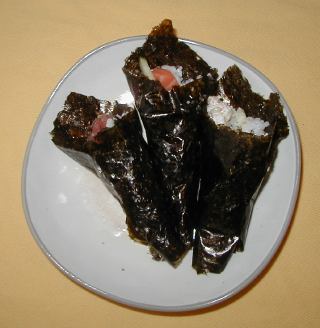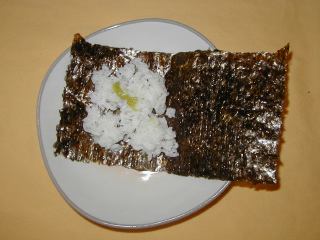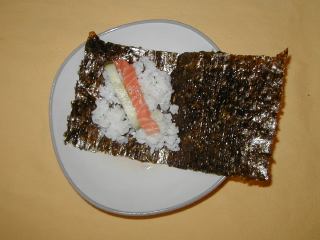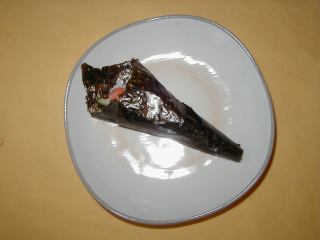Tuna Sashimi with Daikon and Ginger
This is one version of an endless series of variations that is Japanese sashimi, or raw fish. Only use the highest-grade tuna for this recipe -- although you can use any kind of tuna. Sashimi is all about clean flavors and presentation. Lots of fish can be used to make sashimi, but the keys are the dipping sauce, the spicy accompaniment, and the delicately presented vegetable that go with the fish. This recipe serves 4-6 as an appetizer.
Ingredients:
- 1 lb sushi-grade tuna
- A 4-inch piece of daikon radish
- A 2-inch piece of fresh peeled ginger
- 3 t. sake wine
- 1 1/2 T. mirin (sweet cooking sake)
- 1/2 cup soy sauce
- 1 1/2 T. tamari soy sauce
- 1/2 t. dashi granules
Preparation:
Make the dipping sauce. Now you really only need to use a good soy sauce here, but if you want to taste the kind of soy sauce you'd get at a good sushi bar, here is the recipe. All of the ingredients will be available either at a well-stocked supermarket or a health food store. If you can't find the dashi granules, leave them out.
Add the mirin and the sake to a small pot and bring to a boil. Turn off the heat and add the soy sauce, the tamari sauce and the dashi granules (these are dried bonito flakes). Mix well and let this come to room temperature.
Slice the daikon. Square off the daikon with a very sharp knife, then slice it into very thin sheets either with a mandoline or a knife. How thin? As thin as you can slice them.
Now stack those sheets and slice again into very thin sticks. Toss them all into a bowl of ice water and make sure they're all separated.
Grate the ginger. Use the finest grater you have -- a microplane if you have one -- and grate the ginger, then mound it into little cones. Put a cone of ginger on each plate.
Gently wring out and dry the daikon, then arrange some on each plate.
Slice the tuna. With your sharpest knife, cut the tuna into a block. You want to ultimately cut thin slices against the grain of the meat, so look for that grain as you shape the larger block (use the trim for tuna tartare, recipe below).
Slice the thin strips off the tuna block with your sharpest knife. Do this with one motion; start with the part of the knife's edge closest to the handle and then draw it back toward you in a smooth motion. Do not saw it!
Arrange the fish on the plate over the daikon. Garnish with something green; edible crysanthemum leaves are traditional, but you could use flat-leaf parsley, very finely sliced green onion, finely sliced cucumber, etc.
To eat, mix a little of the ground ginger into the soy sauce, then pick up the fish with chopsticks or a fork. Drag the tuna through the dipping sauce and eat. Eat the daikon in between bites, and finish it with the soy sauce.























